When setting up the enclosure for your new crested gecko pet, you want to make sure you do it right, which means you have to get the humidity, temperature, and lighting correct. One important part to consider is the floor of the enclosure, which needs the right substrate. So, what is the best substrate for crested geckos?
The best substrates for a crested gecko’s enclosure include coco bedding, sphagnum moss, cypress mulch, and orchid bark. A good substrate should retain humidity and be easy to clean, but you can combine some of these to improve humidity retention and aesthetics of the enclosure.
How to Choose the Substrate for Crested Geckos

Substrate refers to the material that is used to cover the floor of an animal enclosure. There are many different types of substrates available on the market today ranging from sand and peat moss to coconut fiber chips, etc. When choosing a substrate for your crestie, you want to consider the following factors:
- Easy to clean: A good substrate for crested gecko enclosures is easy to clean and easy to replace. You want to maintain a clean environment and prevent bacteria and infections.
- Remains neutral in pH levels: CrestedgGeckos are sensitive creatures, so the substrate needs to remain at a neutral level for them even when there are humidity changes in their enclosures (You’ll be misting the substrate regularly).
- Safe for crested geckos: The substrate needs to be safe for the geckos, meaning it should be non-toxic: The substrate should not contain any toxins that could harm your crested gecko (e.g. lead).
- Absorbs moisture and retains humidity: A good substrate is one that absorbs and prevents too much water from building up on or around your crestie’s enclosure.
Apart from adding safe plants for crested geckos into their tank, you also want to choose the right substrate.
With these in mind, you can choose from a wide variety of substrate materials for your crested gecko. I’ve listed below the types of materials you might want to choose from, as well as some suggested commercial options to make your work easier.
Best Substrate for Crested Geckos
When choosing a substrate for your crested gecko, you will want something natural and safe for their delicate skin as well as easy to maintain. Here are some options to consider:
Cypress mulch
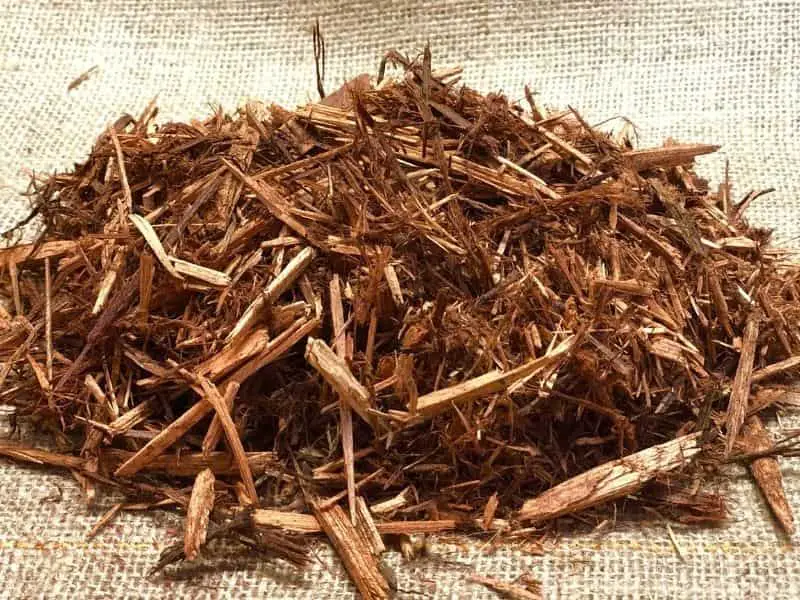
Cypress mulch is a natural substrate to use for crested gecko enclosures. Cypress mulch is soft, and made of shredded bark and other organic materials which helps maintain humidity levels in the enclosure.
Cypress mulch can be used on its own as a substrate or mixed with some sand if you are concerned about it staying too moist over time.
Cork tiles

Cork tiles are another option that many people have found success using for their crested geckos’ environment. This type of tile is composed entirely of cork material that has been compressed into small sheets and bound together with natural glue so they will not break apart easily when handled or stepped on by animals inside the enclosure.
Cork tiles come in various colors, which means they make it easy for you to decorate your pet’s enclosure. The advantage of using cork tiles is that they are non-toxic and easy to lay in your gecko’s enclosure.
Cork tiles can be used on their own or mixed with some sand to provide extra traction so the animal does not slide around inside of its enclosure when they move across it.
Wood chips
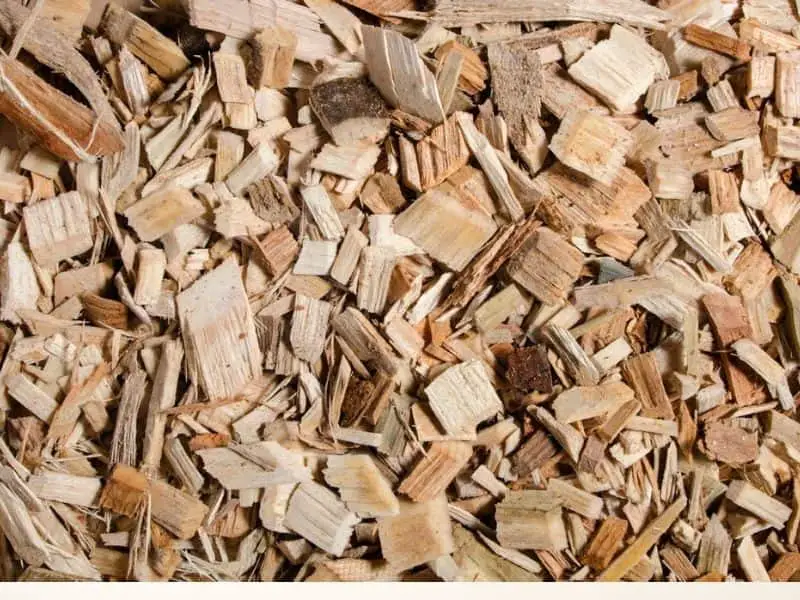
Wood chips are another natural choice, but they tend to be dusty so you may want to consider investing in an enclosure without any type of screen on it. This way, your crested geckos have easy access to get off the bedding if needed.
While wood chips are great, you want to avoid some types of wood shavings such as those of cedar trees. Cedarwood shavings are toxic to many species of animals and can cause sickness or death in some cases.
Vermiculite substrate
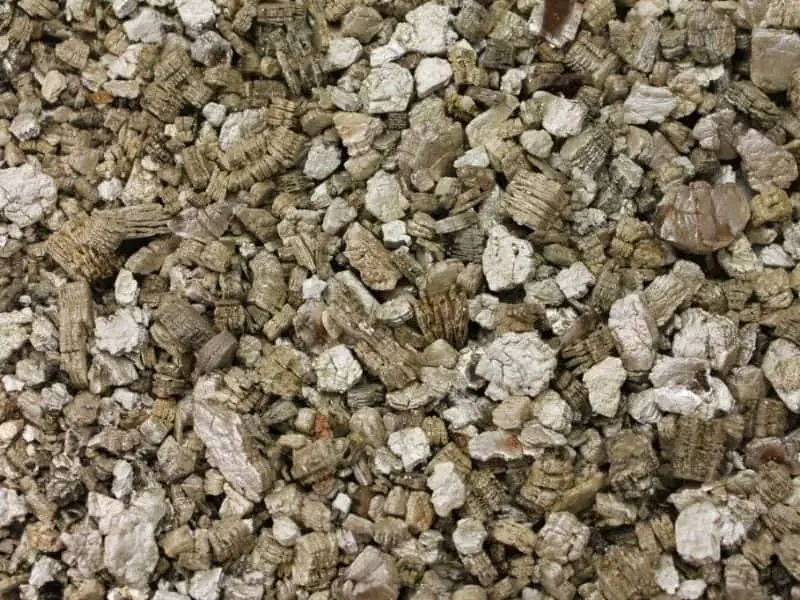
Vermiculite makes a great base for your crested gecko terrarium or vivarium because it retains moisture well and can also help provide additional insulation from heat and cold sources.
Vermiculite is very high in pore space, so it can contain a lot of moisture before the material starts to break down.
Vermiculite also has an excellent ability for storing heat and cold which means that when you need to control the temperature inside your tank or vivarium, vermiculite provides great insulation from other cold and heat sources like vents and lights.
When using vermiculite substrate make sure to keep some sort of layer on top as well such as paper towels or newspaper because while this type of mulch does not have any chemicals in it, there are still small pieces that can be harmful if ingested by the gecko.
Orchid bark
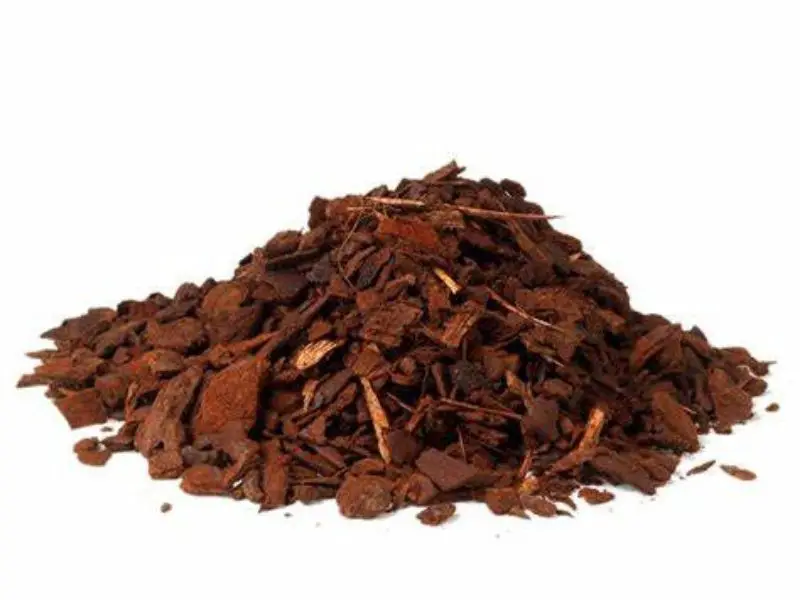
Orchid bark is a great low-risk substrate that can be used for crested gecko enclosures. It has been found to have the least amount of problems with moisture retention which means you will need less frequent misting or spraying in your tank than when using other types of substrates.
If it does get wet, this type of mulch also absorbs water well and will not go moldy as quickly as other options may do.
Keep in mind that even though orchid bark is great at maintaining humidity while providing a low risk of ingestion, your pet can still ingest small amounts of it. I would recommend you line the bark with another soft material to reduce this risk.
Coco bedding substrate
Coco bedding is a coco fiber material that can be used as a substrate for your crested gecko enclosure. It contains no chemicals, and coco fibers are not known to have any negative effects on animals with different types of skin.
While it will take some time before coco beds become fully colonized by beneficial bacteria, they do offer the best moisture retention properties out of many substrates available today.
If you choose this option I would suggest keeping a spray bottle close and spraying down the coco every day or so to keep humidity levels up in enclosures where water bowls may dry up quickly.
Sphagnum moss

Sphagnum moss is a great substrate for crested gecko enclosures because it does not easily become compacted. Along with the benefits of being lightweight, easy to work with, and does not quickly dry out as other substrates do, sphagnum also helps provide an attractive environment that animals can enjoy as well.
You can mix sphagnum moss with a little bit of soil to reduce the risk of compaction even further. At the same time, mixing it with soil provides a great substrate for planting vivarium plants for crested geckos.
As such, sphagnum moss is by far one of the best substrates for crested gecko enclosures.
Paper towels
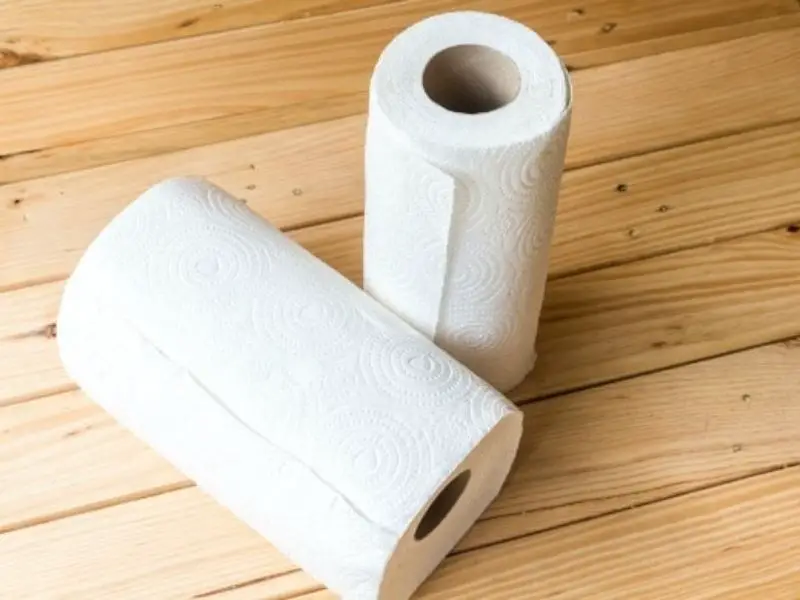
Paper towels are the best substrate for young crested geckos because they need something that is soft and safe for their skin. It is also a lot easier to find and pick food on this type of substrate without the risk of ingesting and causing impaction.
Young crested geckos need a substrate that is soft and easy to clean. While paper towels are one of the most popular options for crested gecko enclosures, it’s not very practical if you are set up with an infrequent schedule or prefer to keep things simple.
Paper towels can be difficult because they are not very easy to clean and replace. That is why it would be best if you only use paper towels for young crested geckos or at least until they outgrow that stage.
READ ALSO: Can Crested Geckos Live Together? Factors and Numbers to Keep
Top 4 Substrate Products for Crested Geckos
If you’re a DIY enthusiast, you can easily prepare your own substrates and use them for setting up your crested gecko’s vivarium. However, there are commercial options on the market today, which are ready-made substrates that you can easily buy and install on the floor of your lizard’s vivarium.
Here are the top 5 substrates for crested geckos:
1. Zoo Med Eco Earth Compressed Coconut Fiber Substrate

This is one of the best substrates for crested geckos. It’s a highly compressed coconut fiber substrate that has a very natural look to it, as well as being odorless and easy to clean.
This product comes with an Eco Earth Substrate starter kit which includes two bags of eco earth (a total of 20 pounds) plus other accessories like coco pots, spray bottles, measuring cups and scoopers.
Pros
- low odor
- easy to clean
- looks natural and blends in well with natural surroundings
Cons
Zoo Med Eco Earth Compressed Coconut Fiber Substrate needs more care when removing the soiled substrate from the enclosure. It can get a bit messy, which is why it’s not ideal for people who don’t have much time on their hands or are new pet owners.
It’s also heavy and will be difficult to remove if you’re trying to move your gecko out of its vivarium for any reason (like cleaning). Lastly, it is a little pricey but worth every penny since it lasts long.
2. Zilla Terrarium Liner Substrate
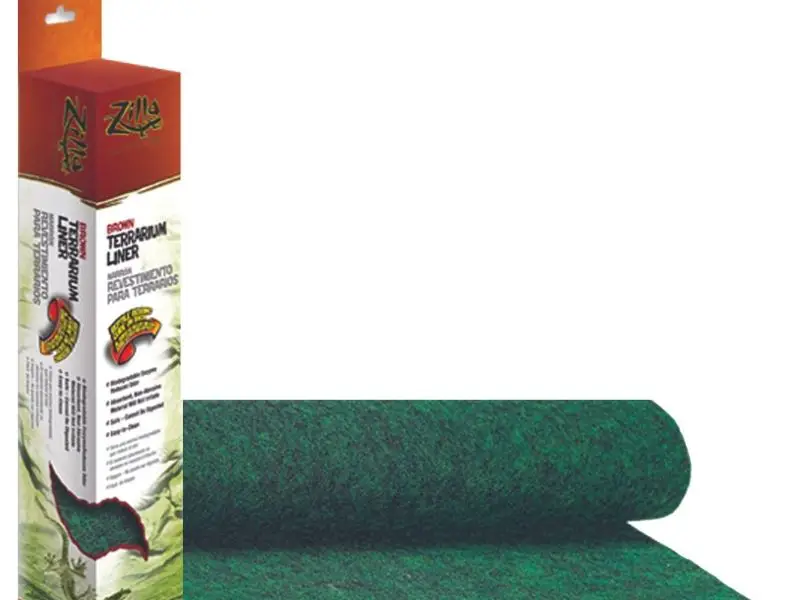
If you’re looking for something that’s quick and easy to install, Zilla Terrarium Liners will be a better option.
Zilla liners are disposable and waterproof too – this makes them perfect for people who want an easier way of cleaning their lizard’s vivarium without having to worry about spillage or dirt getting on the carpet in your room. You can also use these as makeshift substrate holders (think gallons) if you don’t have anything else available at home when it comes time to clean up dirty surfaces.
Pros
- easy-to-use
- disposable so there is no need for clean up afterward
- can hold water well but still dries quickly after spills occur
Cons: The only downside to this product is that it can get a bit messy when you are removing soiled substrates from the enclosure.
You also have to be careful about where these liners will go because they’re not as lightweight and easy to move out of your vivarium compared to other substrates, which means they may sometimes end up in hard-to-reach places.
3. Zoo Med New Zealand Sphagnum Moss
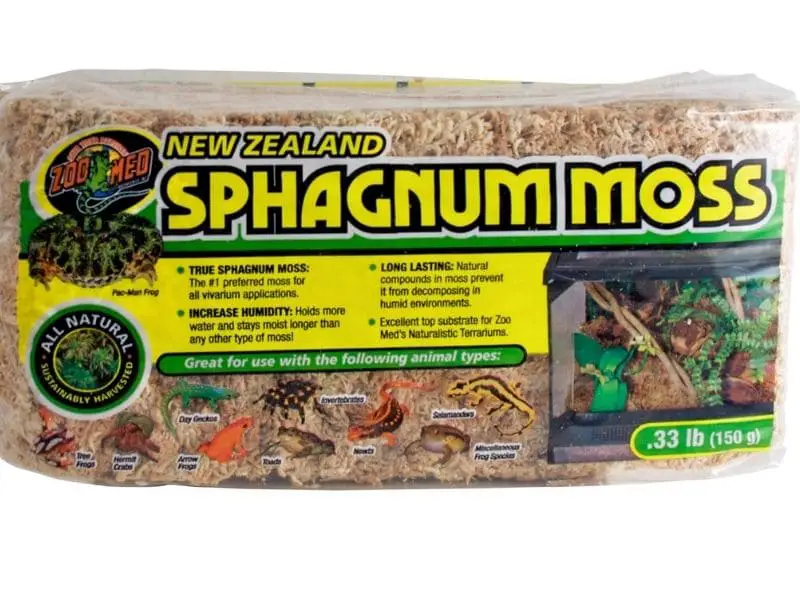
The moss provides a natural habitat for your lizards. It’s made from living plants, which are sourced only in the wild of New Zealand (hence its name).
Pros:
- It provides an excellent substrate for crested geckos to thrive and climb on
- It has high water retention so there is little need to spray or mist often
- It is easy-to-install inside vivariums
- It’s low-cost
Cons:
I found that this substrate can be difficult to clean because you’ll have to dig through all the layers – although this does not mean that it won’t last long if installed correctly since sphagnum moss doesn’t decompose easily as other substrates do. But still, you will not experience any problems with mold growth.
The other downside is that the moss releases strong odors when wet or moist, which can make your vivarium smell bad.
4. ReptiChip Premium Coconut Reptile Substrate
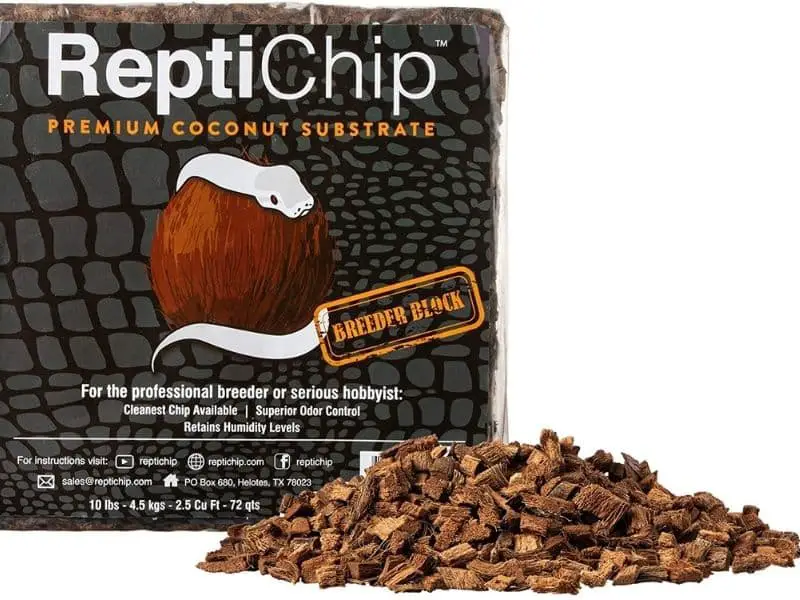
This substrate is made of compressed coconut chips with bark mix. I found it to be lightweight, making it easy to install and remove from the vivarium without much hassle because you can just scoop up what you need – unlike other substrates like sphagnum moss where removal requires a lot more work due to its weight and density.
The light color helps provide better lighting inside your reptile enclosure so that crested geckos can get enough natural UVB rays needed for them to stay healthy.
The high water retention also makes sure that there are no nasty spills or messes in this habitat as often too. It retains humidity well, but it won’t be difficult to dry out if you need to.
Pros:
- It’s lightweight and easy-to-clean so there is a reduced chance of spillage or mess happening in your vivarium enclosure
- Provides high water retention that will prevent nasty spills from happening as often too
- Prevents mold
Conclusion
What you want to avoid are substrates that can retain too much moisture and get wet or dry out too quickly. Substrates such as sand, bark chips, and newspaper will not work for crested geckos in the long run.
It is always best to use a substrate like a coconut coir or peat moss because it absorbs and retains humidity well while also being able to drain any excess liquid away from the enclosure floor. This way your pet has an easier time regulating its body temperature and keeping healthy.
READ NEXT: Do Crested Geckos Need UVB? Guide to Light Needs
